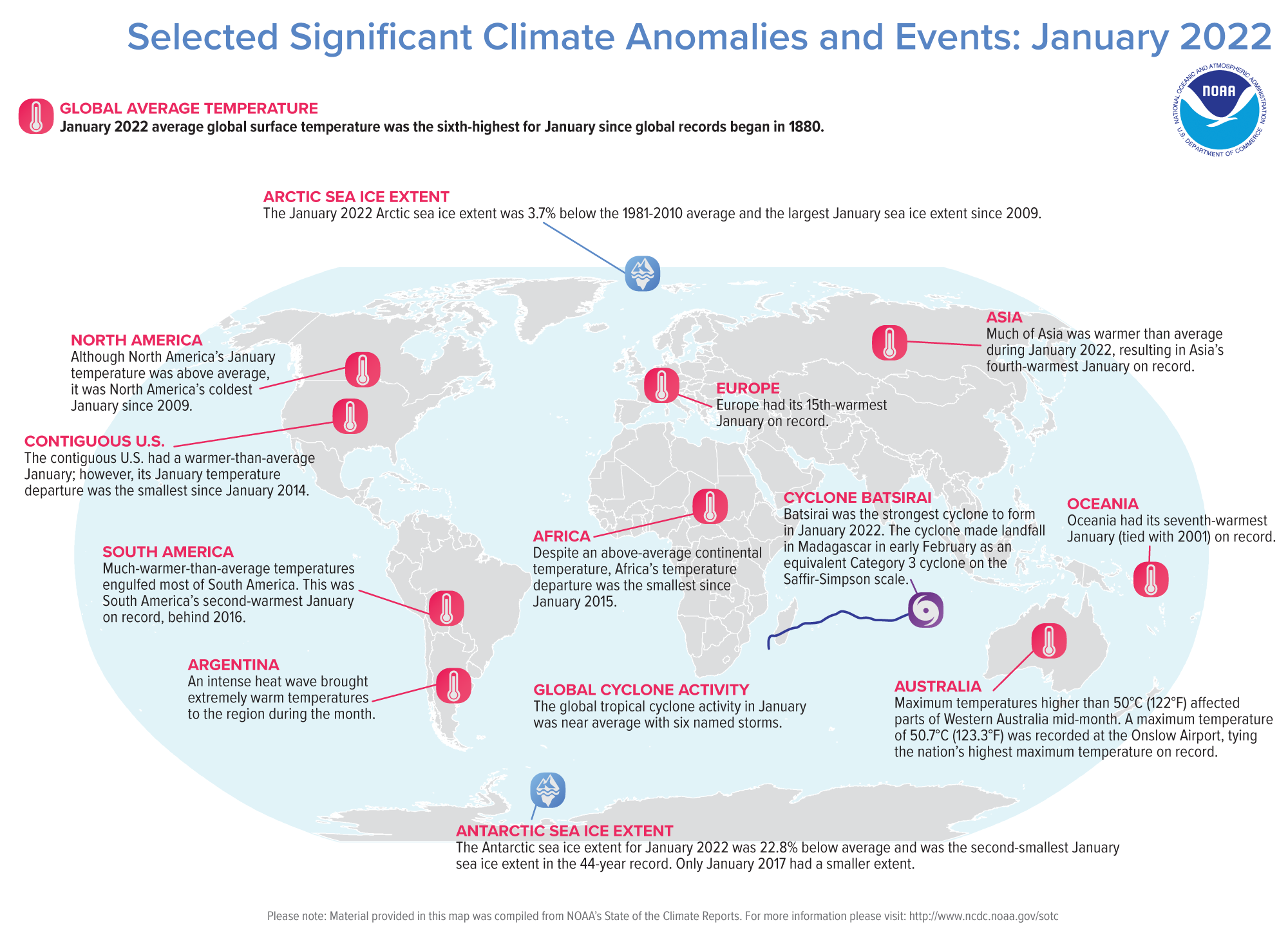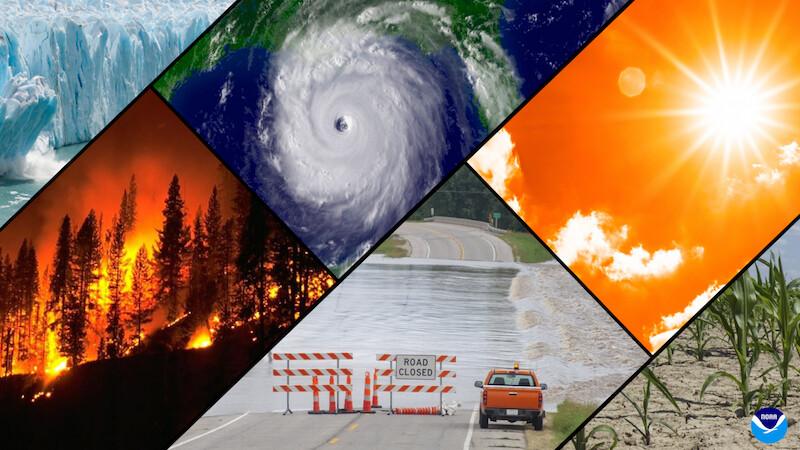The planet rang in 2022 with a remarkably warm January, ranking as the sixth-warmest January in 143 years of climate records, NOAA said in its latest monthly global climate report released this week.
Antarctic sea ice coverage — also referred to as sea ice extent — was near a record low for the month, according to scientists at NOAA’s National Centers for Environmental Information.
Here’s more from NOAA’s latest monthly global climate report:
Climate by the numbers
January 2022
The January global land and ocean surface temperature was 1.60 F (0.89 of a degree C) above the 20th-century average, making it the sixth-warmest January in the 143-year climate record.
Last month was also the 46th consecutive January and the 445th consecutive month with temperatures above the 20th-century average.
South America saw its second-warmest January on record, behind January 2016. Asia had its fourth-warmest January on record, while Oceania’s temperature departure tied with 2001 as the seventh highest. Despite North America and Africa’s above-average January temperatures, they had their coldest January since 2009 and 2015, respectively.

Other notable climate events from January 2022
- Polar sea ice coverage was low. Antarctic sea ice coverage for the month was 440,000 square miles below average — the second smallest January sea ice extent in the 44-year record. Only January 2017 had a smaller sea ice extent. Arctic sea ice extent for the month was 208,000 square miles below the 1981-2010 average, though it was the largest January extent since 2009.
- Snow cover was about average. The Northern Hemisphere’s snow cover during January was slightly above the 1981-2010 average, at 18.26 million square miles. This was the largest January snow cover since 2017.
- Tropical activity was near average. In January, six tropical storms formed around the world, which is typical for the month. The Northern Hemisphere had no tropical cyclones, which is also typical for January. Meanwhile, the Southern Hemisphere’s strongest cyclone of January 2022 — Major Cyclone Batsirai — developed in late January and made landfall in Madagascar in early February.




